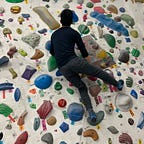Critical Play: Carcassonne
Is this game balanced? Does a player have an unfair advantage over the other(s)?
Carcassonne is a tile-placement game where players draw and place a Land tile with some French landscape features. There are 84 tiles, which might include a city, a road, a cloister, grassland, or some combination of the mentioned, all of which are generally surrounded by fields. The tile must be placed adjacent to tiles that have already been played. Cities must connect to cities and roads must link to roads. After placing a tile, the player may decide to place one of their meeples on one of the areas on it: on the city as a knight, on the road as a robber, on a cloister as a monk, or on the grass as a farmer. Upon successfully connecting and closing an area/feature, the player will receive points and retrieve their meeple. At the end of the game, when there is no more tile left, the players will count up the points where they have their meeple in a completed area.
Balance as a Multi-player Game
The Land tile playing setup always starts with the Start Tile. Because this game is turn-based, meaning there is asymmetry where players might not start with exactly equal position. Carcasson mitigates this impact by setting the rule to shuffle the available tiles and stacked faced down. The first player to start will not have advantages since this randomized shuffle prohibits any prestudy or memorization of card patterns. And to address play order, the rule indicates that the play sequence's order to randomized by methods like randomly drawing a deck of cards or rolling a dice whenever starting a new game.
Another key Carcassonne balances the dynamics between players is to allow the tiles to placed in any orientation. Because this game's goal is to enclose any many features with you meeple, you will want to avoid expanding or closing your opponents’ feature. By allowing a tile to be placed in any orientation as long as it connects to the adjacent landscape, the player who goes after can strategically decide what to do rather than being forced into a certain play move.
Furthermore, each player only gets 7 meeples for the gameplay. Meeple is a limited resource. The player only gets their meeple back in hand by successfully closing a tile feature (road, city, or monastery). They must think about when to place and where to place to allow them to have more chances to score points.
Balance as a Game with Multiple Strategies to Victory
The tile features of Carcassonne offer the players to construct different strategies. They may choose to focus on connecting roads which is worth 1 point each. They can choose to go for connecting city features which will is 2 points each. The player might choose to place their meeple on a monastery will give the player up to 9 points depending on the tiles surrounding the monastery.
One of Carcassonne's most interesting mechanics is to allow a player to outnumber their opponent in a given tile feature by actively placing a meeple on “almost connecting” features. And because the tile is randomly drawn from a shuffled deck, the player might be lucky to get a tile to close a feature segment and take all the points! By introducing chance in the game and allowing the player to think how they might connect in the future rounds, players get to play on an equal footing.
Balance as a Game with Similar Game Objects
Different features have different points. Cities are worth more than roads. Carcassonne has done wonderful work on the balance of the features cost /benefit ratio. Cities are worth more points but they are harder to connect and more prone to meeple number battle. There are tiles with cities opened on four sides which means it allows the player to connect two segment cities more easily. Roads give the player fewer points but are easier to connect. There are more tiles with road features.
The game also allows players to score the tiles that didn’t fully close at the end of the game. This rule allows all the tiles and actions a player choose to become meaningful. A tile is simply not wasted. This is especially important when the available tile count is running low. The players might change their meeple placing strategy to aim for max meeple placement rather than closing tile features.
Conclusion
Carcassonne is an enjoyable game to play with a group of 2–5. During the gameplay, players are constantly thinking questions like “Is it really worth putting my meeple there?” and “Should I use this tile to expand my city, or should I place it near my opponents instead which might prohibit them to complete their area?”. It is a board game that is well balanced for a great play experience.
